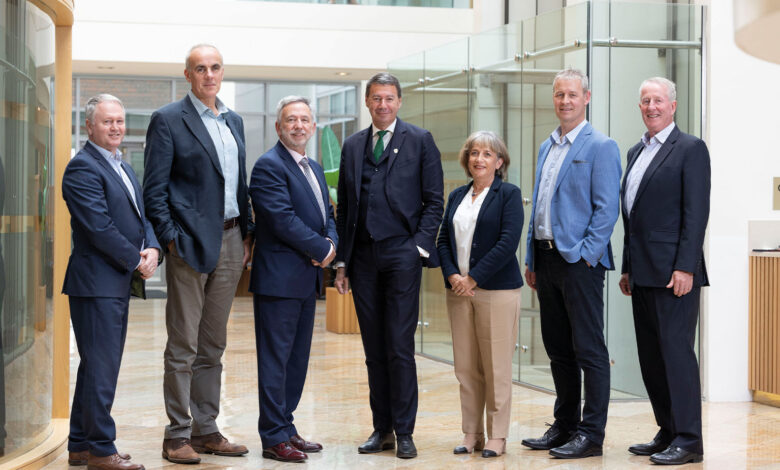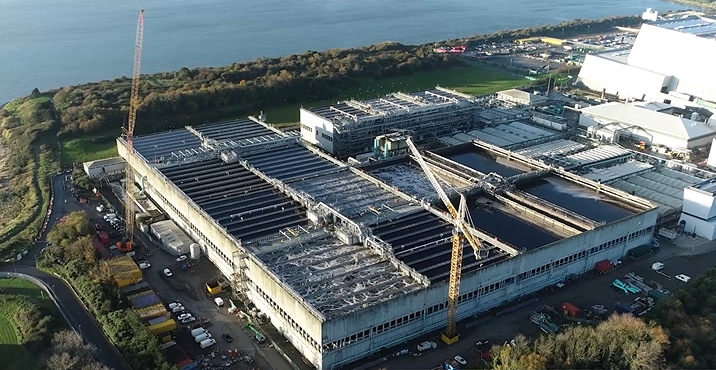Innovation: Solving the great paradox of the 21st century

Today’s world demands that we achieve more with less; less space, less materials, and less waste, writes Anne-Marie Conibear, Egis’ Country Lead for Energy and Water.
This is certainly the case when it comes to water and energy. In responding to the urgent need to upgrade our infrastructure, we must aim to tread lightly – achieving more with less and making as much use as possible of existing structures with new technologies.
It is critical that we deliver the infrastructure needed to meet the demands of our growing population, but we must also reduce infrastructure emissions at all stages from green procurement, lean design, and eco-construction, to operation and end-of-life disposal.
At Egis, we refer to this requirement as the paradox of the 21st century and for us the solution lies in innovation. This is why we have enshrined creativity as one of our core values; fostering a spirit of innovation in our areas of technical expertise, our methods, and our development of new services and business models.
In our experience, innovation involves the development of both creative solutions which break the status quo, in addition to improving what already exists. It is an approach that can, and has, yielded extraordinary results.
Ringsend Wastewater Treatment Plant is the largest facility of its kind in Ireland with a capacity that equates to that of the next nine largest plants combined. Working as part of the 3JV consortium, with TJ O’Connor & Associates and Royal Haskoning DHV, we are providing civil, structural, process, mechanical and electrical and project architect design services for an ongoing upgrade of the plant.
The Works will increase the plant’s treatment capacity from a 1.64 million population equivalent (PE) to 2.4 million by 2026 and are required to reduce nutrients in the treated effluent before discharge to an area that is designated as sensitive under the Urban Wastewater Treatment Directive.
The project’s setting presents constraints as it is located on a confined site that is bordered by sea and by a nature reserve. The plant must also remain operational throughout the construction period.
While a conventional approach would involve increasing the site envelope to accommodate the required standalone secondary treatment WWTP structure, our engineering team explored multiple solutions to provide the capacity upgrade.
This process involved the application of eco-design principles; reducing the ecological and physical footprint required to treat the increased load while increasing the energy efficiency of the upgraded plant. The team’s preferred solution was to utilise the Royal HaskoningDHV patented Nereda® Aerobic Granular Sludge (AGS) technology for the plant upgrades. This allowed for increased biological treatment capacity within the same footprint as a conventional activated sludge treatment plant.

The construction of a new standalone 400,000 PE treatment plant and retrofitting some of the existing Sequencing Batch Reactors (SBRs) with AGS technology has resulted in an increase in capacity without the need to construct significant additional tankage or a 9km long sea outfall. This has delivered a major reduction in the embodied carbon for the entire project.
The 400,000 PE construction contract received a Civil Engineering Excellence Award by the Association of Consulting Engineers of Ireland.
Further upgrades have included the installation of a p-fixation facility, the first of its kind in Ireland. This innovative technology created a circular economy where phosphorus – a dwindling valuable resource – can be extracted from sludge as struvite and used as agricultural fertiliser.
The application of Ephyra®, an innovative sludge digestion technology from Royal Haskoning DHV, means the upgraded plant can optimise anaerobic digester performance within the sludge line, effectively managing an increased load resulting from the plant upgrade and expansion.
Existing digester tanks are being retrofitted to increase their capacity in a process that will also allow production of sustainable energy in the form of biogas. The upgrade has eliminated the need to construct new tanks and the biogas is used to generate electricity and heat required on site – further reducing the plant’s carbon footprint.
In innovation, the solution sometimes lies in reframing the question. Working in close partnership with clients, we support as consultants by refining our brief. By surveying the landscape, exploring solutions, and engaging with colleagues and suppliers internationally, we have discovered better solutions that begin with clarifying the client’s needs and aspirations.
We also innovate by adapting technology in a ‘trickle down’ effect, optimising and applying solutions primed in larger projects for use on smaller-scale ones. For example, the Nereda® technology mentioned earlier has been used to allow energy recovery through biogas capture in smaller wastewater treatment facilities for Uisce Éireann all around Ireland. At a Regional Sludge Hub in Ireland we further maximised the yield from biogas using a thermal hydrolysis process – high temperature and pressure – to create an energy-neutral site.
Our ability to innovate locally is guided by global experience. Our innovation hub nurtures start-up technologies creating use cases for deployment by our engineers globally.
In Qatar, for example, we have created seasonal storage lagoons for recycled water. In France and the Carribbean, we have used nature-based solutions in the form of 3D printed structures inspired by the living world to create a habitat for biodiversity along the coastline. Vigie Risk is a new real-time flood risk hypervisor designed to strengthen infrastructure resilience, and SustainEcho is a platform that uses AI to calculate the carbon footprint of our projects from the raw bills of quantities.
Innovation is in our DNA and we use it daily to respond with passion and determination to the major challenges of our time; climate change, biodiversity degradation, demographic growth, and rapid urbanisation – all of which demand creativity, innovation, and vigour.

W: www.egis-group.com





